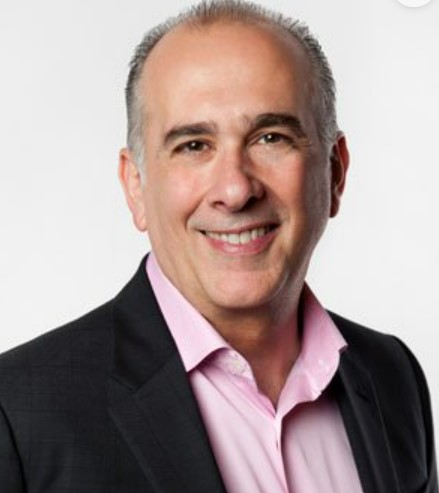RAPS’ Latest | 01 August 2019 | By Zachary Brousseau
When the US Food and Drug Administration (FDA) has significant questions or concerns about clinical data submitted in support of a product under review, it often seeks input from independent academicians and clinicians outside the agency. For this reason, FDA has established Advisory Committees comprised of such experts in various therapeutic areas. Currently, there are 49 such standing committees. If your company is a sponsor of a product subject to Advisory Committee review, the committee meeting is one of the most important milestones for your product’s development.
Adequate preparation for an FDA Advisory Committee meeting is essential to give your product the best chance for approval. RAPS’ recently published Fundamentals of US Regulatory Affairs, 11th Edition includes a chapter devoted to this important topic. This article is based on information from that chapter as well as a conversation with one of the chapter’s authors, Jim DiBiasi, a partner with 3D Communications.
1. Start Planning Early for an FDA Advisory Committee Meeting
The likelihood of a meeting varies by therapeutic area and by compound, says DiBiasi. “There are three major reasons FDA calls an Advisory Committee meeting,” he says. “The product is a new chemical entity, there are questions about the clinical relevance of the efficacy data or questions about safety data.”
For new molecular entities, the Food and Drug Administration Amendments Act of 2007 actually mandates an Advisory Committee review unless FDA has a specific reason not to convene the meeting, in which case the agency must provide a written explanation. Sponsors should begin planning for a meeting early in the submission process, well before one is confirmed because the official notice may not come until a few months prior, leaving you without adequate time to prepare.
2. Know What to Expect of the Meeting
Advisory Committees generally include a chair and several members, as well as consumer and industry representatives. Additional experts may also be brought in to supplement the standing committee members if specialized subject matter expertise is needed. “It is impossible to have regular committee members with expertise on all products and therapeutic areas,” says DiBiasi, who cites oncology as an example of a field with dozens of subspecialties.
Most meetings take a full day, and often conclude with a formal vote on whether to recommend approval. As the name implies, the committee’s purpose is to provide advice. FDA makes the final determination.
It’s important to keep in mind that, in addition to being forums for scientific discussion of the data, the meetings are also high-profile public events. Patient advocacy groups and industry watchdogs often track clinical trials and product development. Your company’s competitors also may be in attendance, and for some products or therapeutic areas, there may be media interest. “It depends on how emotionally charged the meeting is,” says DiBiasi. Breast implants and opioids are two product types that tend to draw media attention.
3. Select the Right Team
It’s very important to select the right presentation team. Identify a senior regulatory professional to drive the project and serve as its champion. The team must be cross-functional and multidimensional to be sure all perspectives are considered. Team members should represent the full range of expertise: regulatory affairs, medical, clinical, toxicology, statistics, pharmacovigilance and commercial. The team’s size will vary depending on company size and resources.
4. Preparation Takes Time
It’s critical to allocate sufficient time for preparation. Most sponsors underestimate the amount of time and resources it takes to properly prepare, according to DiBiasi. “No matter how much time you think is enough, double it,” he says.
DiBiasi recommends preparing using a three-step process. First analyze the data. Second, develop your presentation strategy, and third, create the presentation content and test your material.
5. Know the Committee Members
As in any type of communications, it’s important to know your audience. Committee members have different styles and particular areas of concern. Do your research on their backgrounds, interests and positions on relevant issues. Review past votes and discussion transcripts. And remember that committee members may have limited knowledge specific to your product so you may need to fill knowledge gaps and provide background.
6. Leverage Stakeholder Engagement
It’s a good idea to bring in third-party advocates if you can. Stakeholders representing patient groups or other experts may be brought in to provide additional expertise and impartial voices in support of the product. It’s critical to be transparent about any financial relationships. Advocates should not be paid but sometimes a sponsor may cover travel expenses to bring in patient representatives who otherwise would not be able to attend.
7. Conduct a Thorough, Honest Data Assessment
Think critically about your clinical data. Take an honest look the data and go beyond evidence of the product’s benefit. Play devil’s advocate and look for possible shortcomings. “The data isn’t always cut and dried,” says DiBiasi, and if there are data gaps, risks or likely questions, be prepared to address them.
8. Develop Your Product Story
There is no substitute for good data, but you have to use your data to tell a compelling scientific story. “There is almost a formula to what the FDA expects,” observes DiBiasi. You need to show the benefits of your product, demonstrate the need, and address safety and efficacy. In the end, you need to show the benefit of treatment outweighs the risks. “It’s paramount that there is a very honest conversation about the safety data,” DiBiasi says.
Meetings are typically not adversarial. There may be disagreement on the conclusions drawn from the data, but all parties are aligned in wanting safe, effective products.
9. Prepare Briefing Materials
Conduct a strategic messaging session and ensure consistent messaging across all elements of your presentation. Each issue should have a topic “owner,” who will be responsible for gathering the relevant data and drafting answers to likely questions.
Develop a concise and well-organized briefing book that is easily understandable by committee members regardless of expertise. It should be based on, and aligned with, your New Drug Application, Biologic License Application or Premarket Approval Application. Provide all the information necessary and leave out anything not directly relevant to the issues being considered by the committee. Aim for around 100–150 pages in length.
10. Script Core Presentation
All presenters must know the contents of the briefing book and be able to answer questions pertaining to their areas of responsibility. Sponsors typically have just 45–90 minutes to present data so it’s imperative to be efficient and persuasive. Script every word, advises DiBiasi, and control the story around the data. Not everyone will interpret the data the same way.
11. Anticipate Questions
Anticipate, document, prioritize and categorize questions and construct your answers with clear headlines. Do not rely on general knowledge of the data or plan to answer questions on the fly. “If you honestly assess your data you will be able to anticipate the questions that will be asked by the Advisory Committee,” says DiBiasi.
12. Develop Slides and Slide Management Process
Slides should be developed after the script and follow the same flow. Each slide should support the presenter’s message with relevant data. Do not overcomplicate slides. Each one should be easily digestible and pass the “glance test.” Have a plan for managing slides. Assign teams to work on slides covering specific areas. Prepare backup slides to address all possible questions and have a triage team ready to quickly and calmly locate and show them as needed.
13. Rehearse and Revise
Do not wait until the last moment to rehearse your presentation. This is a trap sponsors too often fall into. A realistic mock rehearsal provides an essential “reality check.” Get experts to stand in for committee members and examine, question and challenge the data the same way committee members are likely to, and then provide honest critiques. With that feedback, refine your presentation accordingly.
In the end, adequate preparation often makes the difference between a successful and unsuccessful meeting. Time and resources spent on preparation may be among the best investments you can make in your promising new product.
© 2022 Regulatory Affairs Professionals Society.
Tags: DiBiasi, FDA Advisory Committee meetings, Fundamentals of US Regulatory Affairs
RELATED: Revive Therapeutics (RVVTF) Provides Update on Phase 3 Clinical Trial for Bucillamine in COVID-19












